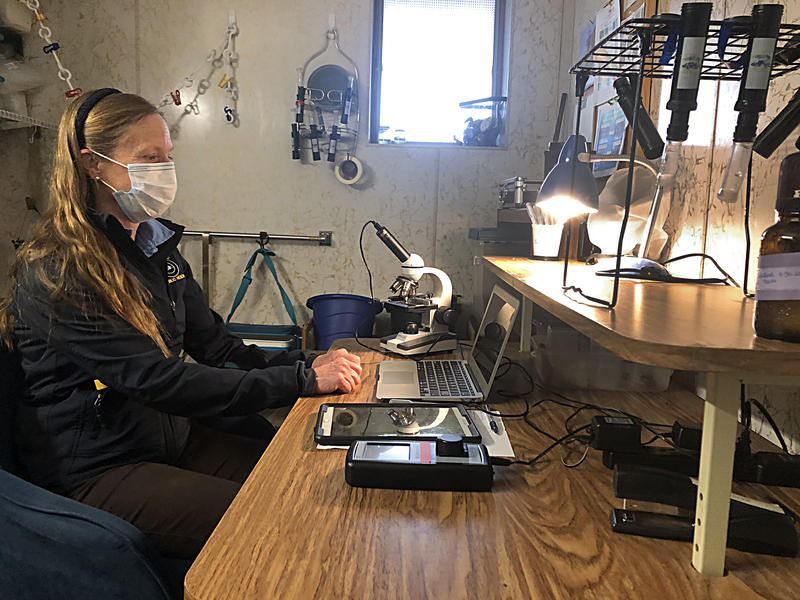What Will It Take To Rid The Region’s Ponds of Toxic Cyanobacteria Blooms?

Karen Malkus works at her lab bench in Barnstable Town offices. (Eve Zuckoff/WCAI)
Biologist Karen Malkus’s laboratory in the Barnstable Town Offices features a marble vanity with a mirror framed by light bulbs.
“It used to be … the ladies’ room, which is now converted into the lab,” she said recently.
Pipettes and amber bottles crowd Malkus’s lab bench. Mostly, she works with her microscope, and device called a “ZAPPR,” which isolates cyanobacteria in water samples.
“Anyway, let me show you. This is my favorite part,” she said, covering a glass slide with a drop of water. The slide, called a Sedgewich Rafter, has 1,000 tiny squares.
“So you take the sample,” she explained. “This is from Long Pond, Centreville. … Can you see them? Can you see those little green flecks?”
Under the microscope, she’s looking for a species of cyanobacteria that produces one of the most toxic natural poisons known, according to the Centers for Disease Control (CDC). When the level in the sample is too high, Malkus can order a pond closed to swimming.
This summer, she had to issue pet advisories, warnings, and closures about 20 times, to keep people safe. In fact, Malkus maintains an email list to notify people directly.
“So that’s why I focus on this,” she said. “It’s to get a sense of the bad guys.”
For the full story, including audio, continue at WCAI’s website.
